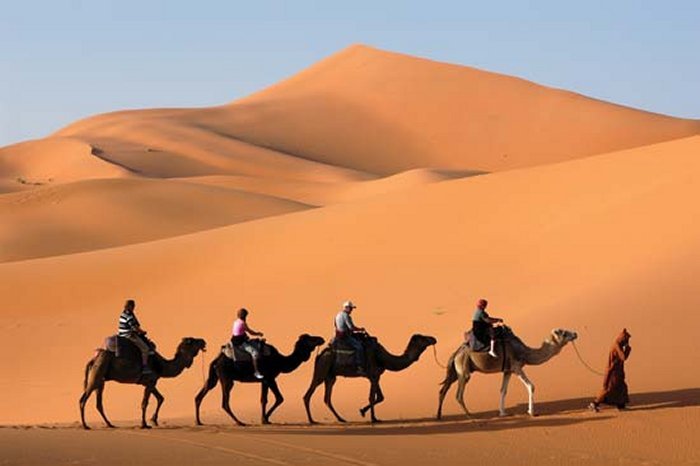MessageToEagle.com – Humans did not accelerate the decline of the ‘Green Sahara’ and may have managed to hold back the onset of the Sahara desert by around 500 years.
A team of geographers and archaeologists from UCL suggests that early pastoralists in North Africa combined detailed knowledge of the environment of the Sahara and developed intricate ways to efficiently manage sparse vegetation and relatively dry and low fertility soils.
“The possibility that humans could have had a stabilizing influence on the environment has significant implications,” Dr. Chris Brierley (UCL Geography), lead author, said in a press release.
“We contest the common narrative that past human-environment interactions must always be one of over-exploitation and degradation.
Brierley said that the study shows that increasing human population and sustainable pastoralism did not accelerate—and may even have delayed—the decline of the ‘Green Sahara’.
Around 8,000 years ago, the Sahara wasn’t desert, but instead was a vibrant ecosystem that supported hunter-gatherers and fisherfolk. The ‘Green Sahara’ – was the period in which North Africa became much wetter than it is today thanks to a series of monsoons.
Pastoralism (nomadic or semi-nomadic cattle-herders) blossomed in the Sahara from around 1000 years before that collapse.
See also:
Secrets Of The Lost Ancient Sahara Civilization
Then, around 5,500 years ago, the ecosystem in the Sahara began to decline as the Earth’s orbit slowly changed, the rain started to reduce and the vegetation started to die back.
The UCL study shows that the ‘Green Sahara’ should have collapsed earlier than it did. This suggests that pastoralists lasted longer than expected and the techniques they used helped them to adapt to the environmental changes.
“Those places where pastoralists last longer are where there are more resources. It’s a good adaptation to the climate change taking place at the time. There is now work today looking at what we can learn from nomadic pastoralists, such as selective grazing strategies, which can be applied to sustainable adaption to desertification that we expect from future climate change,” Brierley explained.
Dr. Katie Manning (King’s College London), concluded: “Despite the largely inhospitable conditions of the Sahara today, it is not hard to find evidence of human occupation from the last 11,000 years. Thousands of rock art sites illustrate a lush environment, large-game hunting and livestock herding. The spread of domestic animals across the Sahara occurred at a time of increasing climatic instability, and yet, these pastoralist populations thrived.
“It is likely that strategies used by contemporary traditional herders, such as seasonal movement and selective grazing, were also used by these early pastoralists, helping to maintain an otherwise deteriorating ecosystem.”
Research is published in Nature Communications.
MessageToEagle.com







